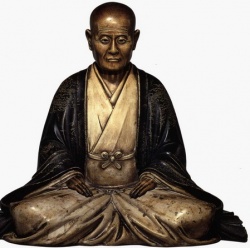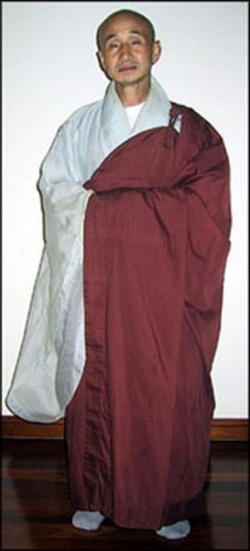Prakrit
Prakrit (also transliterated as Pracrit) (Sanskrit: prākṛta प्राकृत, Shauraseni:pāuda पाउद, Maharashtri:pāua पाउअ) is the name for a group of Middle Indo-Aryan vernacular languages, derived from dialects of Old Indo-Aryan languages, :p.3 particularly from Sanskrit.
The Ardhamagadhi language ("half Magadhi"), an archaic form of the Magadhi language which was used extensively to write Jain scriptures, is often considered to be the definitive form of Prakrit, while others are considered variants thereof. Prakrit grammarians would give the full grammar of Ardhamagadhi first, and then define the other grammars with relation to it. For this reason, courses teaching "Prakrit" are often regarded as teaching Ardhamagadhi. The Pali language (the liturgical Prakrit language of Theravada Buddhism) tends to be treated as a special exception from the variants of the Ardhamagadhi language, as Classical Sanskrit grammars do not consider it as a Prakrit per se, presumably for sectarian rather than linguistic reasons. Other Prakrits are reported in old historical sources, but are no longer spoken (such as Paisaci).
Some modern scholars follow this classification by including all Middle Indo-Aryan languages under the rubric of "Prakrits", while others emphasise the independent development of these languages, often separated from the history of Sanskrit by wide divisions of caste, religion, and geography. While Prakrits were originally seen as "lower" forms of language, the influence they had on Sanskrit, allowing it to be more easily used by the common people, as well as "Sanskritization" of Prakrits gave Prakrits progressively higher cultural cachet.
The word Prakrit itself has a flexible definition, being defined sometimes as "original, natural, artless, normal, ordinary, usual", or "vernacular", in contrast to the literary and religious orthodoxy of Sanskrit. Alternatively, Prakrit can be taken to mean "derived from an original," which means evolved in natural way. Prakrit is foremost a native term, designating "vernaculars" as opposed to Sanskrit.
The Prakrits became literary languages, generally patronized by ancient Indian kings identified with the Kshatriya Varna of Hinduism, but were regarded as illegitimate by the orthodoxy. The earliest extant usage of Prakrit is the corpus of inscriptions of Emperor Asoka (r. 268–232 BCE). Besides this, Prakrit appears in literature in the form of Pāli Canon of Theravada Buddhists, Prakrit canon of the Jains, Prakrit grammars and in lyrics, plays and epics of the times. The various Prakrit languages are associated with different patron dynasties, with different religions and different literary traditions, as well as different regions of the Indian subcontinent. Each Prakrit represents a distinct tradition of literature within the history of India and Nepal.

